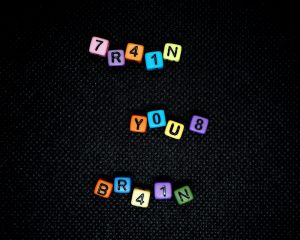Neurodiversity is a good thing for many reasons. For one, an increase in neurodiversity correlates with an increase in mental health awareness. As mental health awareness increases, more people will seek mental health diagnoses. Consequently, as more people seek mental health diagnoses, more people will be diagnosed. This is an especially positive trend for ADHD because getting an ADHD diagnosis is the first step in properly managing the condition.
Furthermore, neurodiversity can promote creativity and innovation. People with mental health conditions often have unique perspectives that they can contribute to creative endeavors such as art, writing, or problem-solving.
Another benefit of neurodiversity and mental health awareness relates to how we interact with each other. As more people become aware of different mental health conditions, they can better understand each other’s differences and provide the necessary support. This improved understanding will lead to more meaningful relationships and a greater sense of acceptance in the community.
In contrast, neurotypical individuals tend to be viewed as “normal” or “average.” However, can anyone truly be considered a “neurotypical”? What if two people were taking a timed written test, one person has ADHD, while the other is neurotypical. It might seem like a person with ADHD is at a natural disadvantage. However, what if the person with ADHD had a higher IQ than the neurotypical? Then, the outcome might be comparable between the two test takers.
This comparison highlights the importance of recognizing individuality. Everyone has strengths and weaknesses, and it’s essential to take into consideration different individual abilities rather than just the labels given by society. For example, it is possible for two people who are labeled “neurodivergent” or “neurotypical” to have strikingly similar abilities and achievements.
I believe that we must recognize and embrace each individual’s uniqueness rather than viewing everyone as either “neurotypical” or “neurodivergent.” Furthermore, I don’t believe that anyone is genuinely “neurotypical.” Instead, as doctors learn and refine our mental health knowledge, we can all be increasingly classified as neurodiverse.
While I recognize the medically diagnostic rationale for using these labels, I believe that society is increasingly using the term “neurotypical” as a negative description of people. I don’t think pitting neurodiversity and neurotypicality against each other is a good practice. Instead, I think that pitting us against each other is destructive.
Instead, we should focus on celebrating our differences and promoting understanding through mental health awareness. Only then can we fully realize the potential of neurodiversity. In doing so, we can move closer to a society where everyone is accepted for who they are and not judged by labels.
We need to champion neurodiversity as a goal for everyone, non-exclusively. But, at the same time, we need to recognize that “normal” and “neurotypical” are unrealistic labels for anyone. No one is truly “normal.” Instead, we all fall somewhere in between.
Ultimately, embracing neurodiversity will lead to greater acceptance of mental health conditions in our society and potentially more creative solutions that come through recognizing different perspectives.
Neurodiversity vs. Neurotypical
This post may contain affiliate links that earn us a commission when you buy through our product links. For our full disclosure, please visit our Privacy Policy page.


 It’s ok, though, because it’s Friday, and each Friday ends with cool music and fun crafts. At least for the good students. For the students that didn’t behave or finish their homework, we moved to the right side of the classroom.
It’s ok, though, because it’s Friday, and each Friday ends with cool music and fun crafts. At least for the good students. For the students that didn’t behave or finish their homework, we moved to the right side of the classroom.


